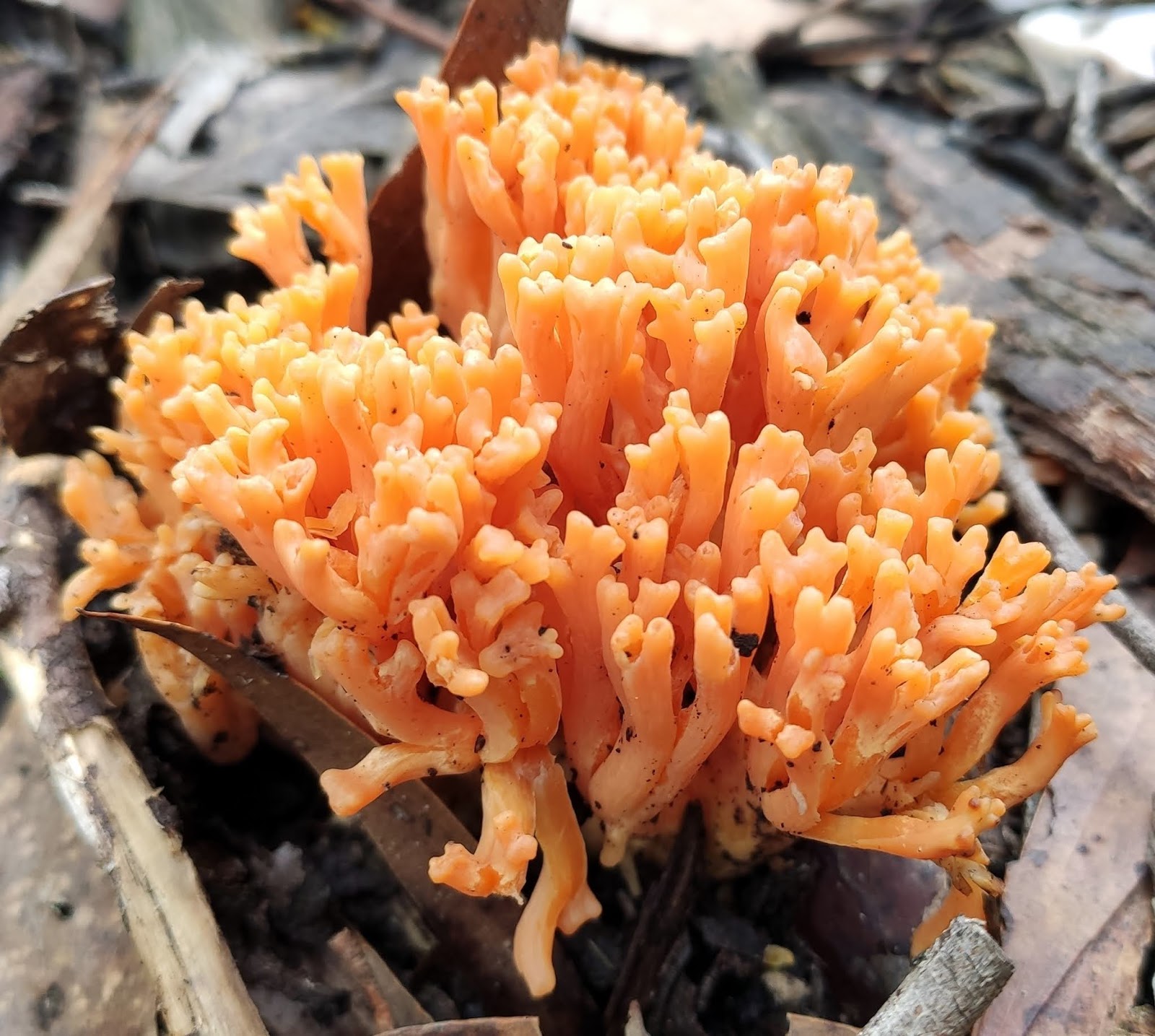Jubilee Heritage Area Circuit
U3A Hike No. 103
Andrew: Our thanks go to Gordon who conceived, researched and prepared this hike.
Hike Reports by Chris, Marianne and Jan
Chris: Following morning tea by an intact dam, we continued along a trail past some more smaller scale workings. Lots of heath and various fungi along the way. Lunch at a ridge just past the eponymous Gordon Gully, then a pleasant walk through the eucalyptus back to our starting point for a cuppa, content but no richer.
Andrew: Our thanks go to Gordon who conceived, researched and prepared this hike.
Hike Reports by Chris, Marianne and Jan
Chris: Three groups congregated in Smythesdale for the drive to the Jubilee
Reserve, about 8km to the west. We all had our wet weather gear. Although there
proved to be lots of surface water on the tracks, it turned out to be fine, if
cool. My group, led by Gordon had the
advantage of including Ken who is descended from a line of local miners. He was
sure this would enable him to readily identify any nuggets uncovered by the
rains.
Surface gold mining in the region in the 1850’s was followed by deep lead
workings from later that decade. The Jubilee Quartz Mining Company, formed
following the discovery of a “new” deep lead reef in 1887 was the biggest and
most technologically advanced. There were dozens in the district. The area, now
deserted, was then a thriving European community with up to 800 students at the
school. There is little evidence of the community infrastructure remaining,
however, the reserve contains one of the best collections of historic mining
features in the state, now nestled among the forest.
Marianne:
With Tim as our very capable leader we
followed the tracks and trails to the site of the Jubilee Mine and viewed the
remnants of the buildings and read the information plaques about the workings
and lifestyle of that bygone era.
Jan: The six hikers in White Group met in Smythesdale at 8.30 am then drove about 9 kms in convoy to the
start of our walk at the Jubilee Mine Historic Area. It was a bit chilly with a
suspicious 'rainy' feel in the air but ended up being a mostly bright and sunny
autumn day; perfect for a walk through the bush. Particularly as the bush was
peppered with deep mine shafts, dams, mullock heaps
and interesting artifacts from bygone gold mining days.
We stopped and read the informative signs along the way and tried to imagine a
bustling settlement that has largely vanished.
Chris: There are many remaining dry water channels and dams which were
constructed at the time. The brick and concrete foundations of the mine’s water
tanks, boilers and a giant array of crushing batteries remain largely intact. The remaining mullock and sand heaps along
with distinctive clearings are also evidence of the nature of the mining
activity. Display posts with photographs and drawings of mining methods help to
describe life in an earlier time. We also saw the cyanide tanks which workers
used up until the 1930’s to extract residual deposits.
Chris: Following morning tea by an intact dam, we continued along a trail past some more smaller scale workings. Lots of heath and various fungi along the way. Lunch at a ridge just past the eponymous Gordon Gully, then a pleasant walk through the eucalyptus back to our starting point for a cuppa, content but no richer.
Marianne:
Morning tea was enjoyed on the bank of the Jubilee Dam, with bright sunshine
and a cloudless sky creating beautiful reflections on the water.
Jan: Every now and again we caught a glimpse of another group of U3A hikers
up ahead but were able to avoid contact by stopping for a while and having
morning tea or lunch (using the logs recently vacated by Gordon's group).
Marianne: I found
this hike thoroughly enjoyable because of the many varieties of flora. On both sides of the track
there was an abundance of varying shades of pink heath as well as many
different types of colourful fungi. The hike took us through areas of
previously burnt trees, evidence of the bushfires that raged through there
several years ago. It is always pleasing to witness the regeneration of natural
bushland.
Jan: Walking was mostly along flat paths and tracks with the occasional very
large puddle to dodge. The pink Common Heath was in bloom and looked very
pretty. At one stage we caught up to the
Gold Group and people mingled enthusiastically and caught up on each other's
news (and reunited Marianne with her mat). We learned that they had left an
arrow on the path pointing to some interesting fungi, but we'd been completely
oblivious of their creative signage.
Marianne: A red robin and two female robins
delighted us with their presence at our lunch spot.
Chris: Thanks to Gordon, Tim and Andrew for this exploration of a bygone era.
Marianne: On our return we followed part of the Rainbow Bird
Trail to arrive back at our cars after a hike through history and an extremely
enjoyable meander through beautiful natural bush.
Jan: A few people stayed back a bit so that the group did not exceed 10
people - the current limit set by the Victorian government. After having a bit
of a catch up our groups separated and not long afterwards we saw our cars at
the end of our circuit walk. The six of us then got folding chairs and extra
refreshments from our cars and sat in a pleasant grassy spot and enjoyed
relaxing at the end of our lovely hike.
Thanks
everyone for another very enjoyable Thursday.
Photos by Gordon, Andrew and Marianne
 |
| Coral Fungi |





















Comments
Post a Comment